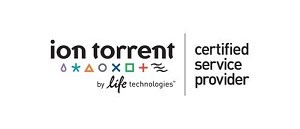Ehlers-Danlos (EDS) syndromes are a relatively large group of hereditary syndromes, generally associated with abnormalities of the connective tissue. Either directly or indirectly, Ehlers-Danlos syndromes lead to anomalies of the biology of collagen in the body (which is the most abundant protein), which may in turn lead to multi-systemic clinical symptoms. Each type of EDS has certain characteristics, and each type has a known gene that causes the disease. Each type is a distinct disease entity and may have very specific and unique features.
Genomic testing for Ehlers-Danlos syndrome – 7 genes minimal NGS panel


Some typical clinical features that are common to all types of Ehlers-Danlos, include joint hypermobility and hyper-extensible joints, frequent dislocations, joint pain, early onset osteoarthritis, soft (plush) skin, hyper-extensibility of the skin, fragile skin which bruises easily, slow and poor wound healing, cardiac defects, etc .
Today, Ehlers-Danlos (EDS) syndromes include the following 6 main types:
- Classical Type
- Vascular Type
- Kyphoscoliosis Type
- Arthrochalasia Type
- Dermatosparaxis Type
- Hypermobility Type
- Other Types
Mutations in more than 12 genes have been associated with Ehlers-Danlos syndrome. The classic type is typically associated with mutations in the COL5A1 or COL5A2 genes. Mutations in the TNXB gene have been found in a very small percentage of cases of hypermobility type, but in most cases the underlying genetic cause of this particular type is unknown. The vascular type is associated with mutations in the COL3A1 gene, while mutations of the PLOD1 gene are associated with the kyphoscoliosis type. Mutations in the COL1A1 or COL1A2 genes are linked to the arthrochalasia type, while mutations in the ADAMTS2 gene are linked to the dermatosparaxis type. The other, less well characterized, Ehlers-Danlos types result from mutations in other genes, some of which have not yet been identified.
The Ehlers-Danlos syndromes are mostly inherited in an autosomal dominant manner, while certain types are inherited in an autosomal recessive manner.
We perform DNA sequence analysis, via Next Generation Sequencing (NGS) on a Genome Analyzer – Ion Proton platform, of all exons and intron-exon junctions/splice sites of the 7 genes:
| GENE | OMIM GENE | OMIM DISEASE | OMIM DISEASE | INHERITANCE (AR, AD, XL) |
| COL1A1 | 120150 | 130000; 130060 | Ehlers-Danlos syndrome, classic; Ehlers-Danlos syndrome, type VIIA | AD |
| COL1A2 | 120160 | 225320; 130060 | Ehlers-Danlos syndrome, cardiac valvular form; Ehlers-Danlos syndrome, type VIIB | AR |
| COL3A1 | 120180 | 130050 | Ehlers-Danlos syndrome, type IV | AD |
| COL5A1 | 120215 | 130000 | Ehlers-Danlos syndrome, classic type | AD |
| COL5A2 | 120190 | 130000 | Ehlers-Danlos syndrome, classic type | AD |
| PLOD1 | 153454 | 225400 | Ehlers-Danlos syndrome, type VI | AR |
| TNXB | 600985 | 606408 | Ehlers-Danlos syndrome due to tenascin X deficiency | AR |
allowing us to detect >98% of all pathogenic mutations of the genes through the use of specially developed bioinformatics tools, covering a considerable proportion (~90%) of all known Ehlers-Danlos syndrome types (minimal gene panel).
Where possible and/or necessary, we carry out additional MLPA analysis in order to detect deletions/duplications of the genes (please consult the final test report).
The test is highly sensitive and complex, so it is necessary that the results are assessed by a specialized team of clinical and molecular geneticists, in order to ensure safe and reliable testing.
Proper clinical genetic assessment and genetic counseling, both before and after testing, is essential in order to determine the optimum testing strategy and also to communicate properly the concepts of pathological and normal.
InterGenetics is a Ion Torrent™ Certified Service Provider for Ion AmpliSeq sequencing on the Ion Proton platform.
